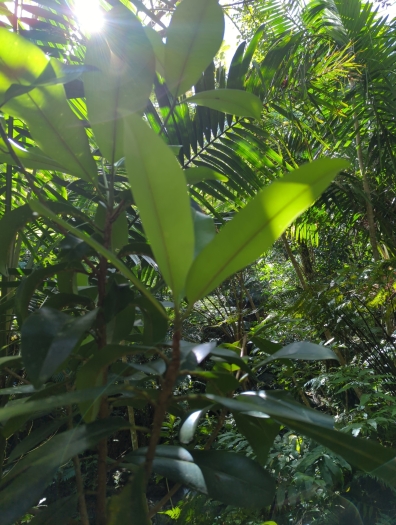Bulletwood
(Manilkara bidentata)
Bulletwood (Manilkara bidentata)
/
/

Noland Martin
CC BY-SA 4.0
Image By:
Noland Martin
Recorded By:
Copyright:
CC BY-SA 4.0
Copyright Notice:
Photo by: Noland Martin | License Type: CC BY-SA 4.0 | License URL: http://creativecommons.org/licenses/by-sa/4.0/ | Rights Holder: Noland Martin | Publisher: iNaturalist | Date Created: 2023-01-14T17:54:47Z |













Estimated Native Range
Summary
Manilkara bidentata, commonly known as bulletwood or balatá, is an evergreen tree native to tropical rainforests and coastal forests of northern South America, Central America, and the Caribbean. It can grow to an impressive height of 98-148 feet (30-45 meters) with a dense, rounded canopy. The leaves are alternate, glossy, and elliptical, measuring 4-8 inches long. Bulletwood is notable for its small, fragrant white flowers that bloom at the beginning of the rainy season, which are followed by round, yellow berries that are 1-2 inches in diameter and edible when ripe. The tree’s bark is thick and ridged, providing an additional textural interest.
Bulletwood is valued for its exceptionally hard and dense wood, which is used in high-end furniture and construction. The latex harvested from the tree is the primary ingredient in chicle, historically used in chewing gum and other industrial products. In cultivation, bulletwood is often used as a shade tree or ornamental specimen due to its attractive foliage and form. It requires well-drained soils, moderate to high water availability, and thrives in full sun to partial shade conditions. While it is not commonly grown in temperate regions, it can be a suitable choice for tropical and subtropical landscapes. Gardeners should be aware that the tree’s size and root system may pose challenges in smaller settings.CC BY-SA 4.0
Bulletwood is valued for its exceptionally hard and dense wood, which is used in high-end furniture and construction. The latex harvested from the tree is the primary ingredient in chicle, historically used in chewing gum and other industrial products. In cultivation, bulletwood is often used as a shade tree or ornamental specimen due to its attractive foliage and form. It requires well-drained soils, moderate to high water availability, and thrives in full sun to partial shade conditions. While it is not commonly grown in temperate regions, it can be a suitable choice for tropical and subtropical landscapes. Gardeners should be aware that the tree’s size and root system may pose challenges in smaller settings.CC BY-SA 4.0
Plant Description
- Plant Type: Tree
- Height: 100-150 feet
- Width: 4-6 feet
- Growth Rate: Slow
- Flower Color: White
- Flowering Season: Summer
- Leaf Retention: Evergreen
Growth Requirements
- Sun: Full Sun, Part Shade
- Water: Medium
- Drainage: Medium, Slow
Common Uses
Drought Tolerant, Edible*Disclaimer: Easyscape's listed plant edibility is for informational use. Always verify the safety and proper identification of any plant before consumption., Erosion Control, Low Maintenance
Natural Habitat
Tropical rainforests and coastal forests of northern South America, Central America, and the Caribbean
Other Names
Common Names: Ausubo, Massaranduba, Bulletwood, Bullytree, Balatá
Scientific Names: , Manilkara bidentata, Mimusops bidentata, Mimusops reticulata, Mimusops reticulata,
GBIF Accepted Name: